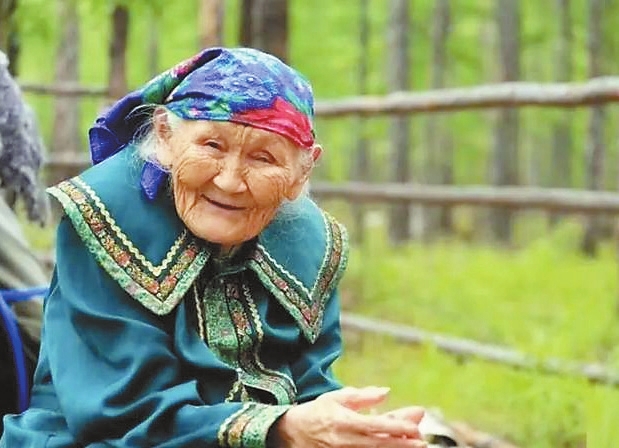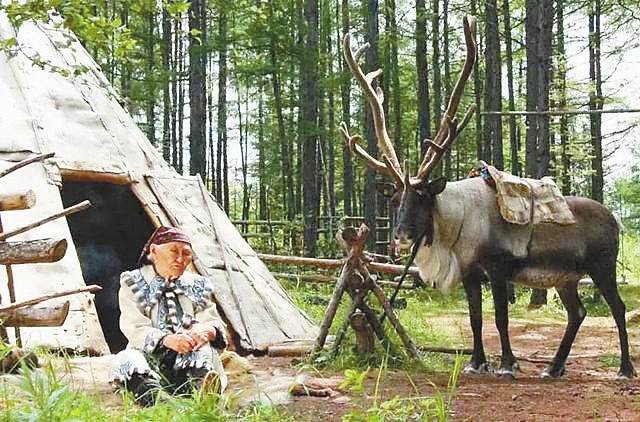

MARIA SUO, known as the “last matriarch in China,” passed away Aug. 20 beside her beloved reindeer in Genhe City, Hulunbuir City, Inner Mongolia Autonomous Region. She was 101. According to an obituary issued by Suo’s family, Suo gradually failed in various bodily functions due to her age. Although her health was not good, she still wanted to go into the mountains to see the reindeer she raised all her life. Suo, an Ewenki minority, lived in the mountainous area at the southernmost tip of the Taiga belt in the circumpolar Arctic. She led her tribal people to raise reindeer in the Greater Khingan Mountains. The protagonist in the Chinese novel “The Last Quarter of the Moon” (2005) which won the Mao Dun Literary Prize was inspired by Suo. Suo was deeply respected by the villagers for sticking to the mountains and forests to preserve the reindeer-raising customs. In her younger days, she was good at hunting and managing family issues, so after her husband died, she became the master of the clan. She was industrious, capable and versatile. In her hands, animal skins were sewn into gloves, hats and clothes, and birch bark was woven into baskets and crates. Ewenki means “people living in the mountains and forests” in their ethnic language. There are three main branches of the Ewenki people in China, the Suolun, the Tunguska and the Reindeer Ewenki. According to historical records, the ancestors of the Reindeer Ewenki people lived in the tundra highlands in the upper reaches of the Nercha River in the northeastern part of Lake Baikal in 2000 B.C. In the 18th century, the Reindeer Ewenki people migrated from Russia and Mongolia to the Greater Khingan Mountains in the Inner Mongolia Autonomous Region and Heilongjiang Province, China. The Reindeer Ewenki tribe living in Aoluguya Ewenki Ethnic Township, Genhe City, Hulunbuir City, Inner Mongolia Autonomous Region, is historically known as “the last reindeer tribe.” It is also the only ethnic group in China that raises reindeer and preserves the reindeer culture. The topographic features consisting of high mountains and dense forests result in rich natural resources. Under such an extreme natural environment, the Ewenki people rely on herding. Reindeer raising secured for them a self-sufficient life in the mountains and forests. The Ewenki people’s clothes, shoes, hats and the leather cushions in Cuoluozi, a kind of spire tent built with wooden poles, are all made of reindeer skin. Their staple food is dried meat, bread and reindeer milk. With the advancement of modern civilization, huge changes have taken place among the Reindeer Ewenki population and the environment they live in. The younger generations have moved down the mountains and chosen modern lifestyles. Nowadays, there is a very small number of people who still maintain a relatively natural lifestyle. From the 1950s to 2003, three batches of the Reindeer Ewenki people have moved down the mountains and the local government relocated them to live in modern apartments in the suburbs of Genhe City. Hunting rifles are also forbidden for use. Accustomed to living with reindeer on the mountains, some older people, including Suo, refused to move and remained in the mountains, raising reindeer and guarding the forests. Nowadays, most villagers have become involved in the tourism business, turning the “primitive tribe” into a scenic spot. From May to July every year, tourists come to experience traditional Ewenki lifestyle, including drinking reindeer milk, feeding reindeer and sharing accommodations in the Cuoluozi tents. Since 2008, eight reindeer farms in Aoluguya Ewenki Ethnic Township have joined international reindeer husbandry associations to share experiences in reindeer raising. This year, more reindeer farms have been established on the mountains in the township and the number of reindeer has increased to 1,200. The Reindeer Culture Museum in the township also introduces the herding culture which has been handed down for thousands of years. (SD-China Daily) | 
